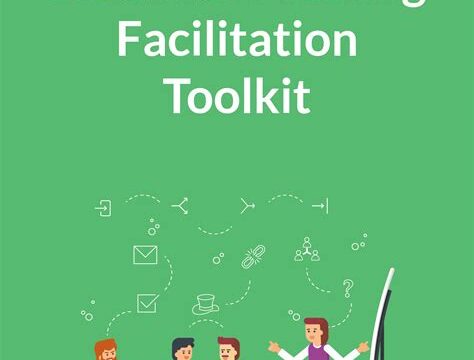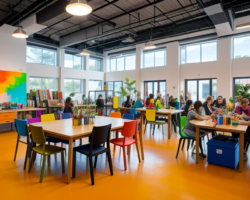Learn how to effectively plan and execute a workshop with our comprehensive guide, covering objectives, materials, visual aids, interactive tools, handouts, technology, supplies, and participant adaptability.
Understanding Workshop Objectives
In order to have a successful workshop, it is essential to clearly define the objectives of the session. Understanding the workshop objectives helps to guide the content and activities that will be included, ensuring that the session aligns with the desired outcomes. Whether the objectives are to educate, inspire, or problem-solve, having a clear understanding of what the workshop aims to achieve is crucial for planning and executing a successful session.
Furthermore, by identifying and communicating the workshop objectives, participants will have a clearer understanding of what to expect, allowing them to mentally prepare and actively engage in the session. This level of clarity also helps to manage expectations and provide a sense of direction throughout the workshop, ultimately leading to a more productive and fulfilling experience for everyone involved.
When it comes to understanding workshop objectives, it is important to keep in mind that the goals and desired outcomes may vary depending on the nature of the workshop and the specific needs of the participants. Therefore, taking the time to clearly define and understand the objectives will ultimately set the stage for a successful and impactful workshop session.
Selecting Relevant Materials
When it comes to conducting a successful workshop, one of the most important tasks is selecting relevant materials that will support the learning objectives and engage participants throughout the session. Whether it’s handouts, worksheets, or visual aids, the materials used in a workshop play a crucial role in the overall effectiveness of the session.
It’s essential to consider the specific needs and learning styles of the participants when selecting relevant materials. For example, if the workshop involves hands-on activities, providing tangible materials such as props, samples, or manipulatives can enhance the learning experience for participants. On the other hand, if the workshop content is more theoretical, visual aids and printed materials may be more appropriate.
Additionally, selecting relevant materials also involves ensuring that the resources align with the workshop objectives and desired outcomes. The materials should be carefully curated to support the key points being presented and should complement the overall structure of the session. By thoughtfully choosing the right materials, workshop facilitators can create a more engaging and impactful learning experience for participants.
Preparing Engaging Visual Aids
Workshop Toolkit: Essential Resources and Materials for a Successful Session
When preparing for a workshop, it’s important to consider the visual aids that will be used to enhance the learning experience for participants. Engaging visual aids can help to capture the attention of the audience and make the content more memorable. One key aspect of preparing engaging visual aids is to ensure that they are relevant to the topic being discussed. This can include using images, videos, or diagrams that are directly related to the content being presented.
Another important consideration when preparing visual aids is to make sure that they are visually appealing and easy to understand. This means using clear and high-quality images, choosing colors that are easy on the eyes, and avoiding cluttered or overly complex visuals. The goal is to support the content being presented, not detract from it. Additionally, it’s important to consider the size and placement of visual aids to ensure that they can be easily seen by all participants.
Finally, it’s important to consider the technology that will be used to display visual aids. Whether using a projector, screen, or digital display, it’s crucial to test the equipment beforehand and ensure that it is working properly. If using any interactive tools or software, make sure that participants are familiar with how to use them so that the visual aids can be effectively utilized during the workshop.
Utilizing Interactive Tools
When conducting a workshop, it is essential to utilize interactive tools to engage participants and enhance the learning experience. Interactive tools can include anything from online polling platforms, to virtual whiteboards, to live chat features. These tools allow for real-time participation and feedback, making the workshop more dynamic and engaging for everyone involved.
One popular interactive tool is a polling platform, such as Mentimeter or Poll Everywhere. These platforms allow presenters to pose questions to the audience, who can respond in real-time using their smartphones or other devices. The results are then displayed instantly, sparking discussion and giving the presenter valuable insights into the participants’ perspectives.
Another useful interactive tool is a virtual whiteboard, such as Miro or Google Jamboard. These tools allow for collaborative brainstorming and idea-sharing, where participants can contribute and visualize their ideas in real-time. This not only encourages active participation, but also fosters a sense of teamwork and creativity among the participants.
Creating Handouts and Worksheets
Creating handouts and worksheets are essential components of any workshop or training session. These materials provide participants with valuable information and serve as valuable resources for them to refer back to after the session is over. When creating handouts and worksheets, it’s important to tailor the content to the specific objectives of the workshop. By doing so, you can ensure that the information provided is relevant and useful for the participants.
It’s also important to structure the handouts and worksheets in a way that is easy for participants to navigate. This can be achieved by using clear headings, bullet points, and numbered lists to organize the information. Visual elements such as charts, graphs, and images can also help to break up the text and make the materials more engaging for the participants.
Moreover, it’s crucial to include interactive elements in the handouts and worksheets, such as fill-in-the-blank exercises, reflection questions, and group activities. These interactive components can help to keep participants engaged and reinforce their learning. By creating handouts and worksheets that are engaging and interactive, you can maximize the effectiveness of your workshop and ensure that participants are able to apply the knowledge and skills they have gained.
Implementing Technology Resources
When conducting a workshop, it is crucial to implement technology resources in order to create a dynamic and engaging learning environment. One of the key technology resources to consider is the use of audiovisual equipment, such as projectors and screens, to display presentations and videos. These tools can enhance participants’ learning experience by providing visual aids that support the content being discussed.
Additionally, the use of online platforms and collaborative tools can greatly benefit workshop sessions. Platforms such as Google Drive or Dropbox can be utilized for sharing materials, while collaborative tools like Google Docs or Microsoft Teams can enable real-time group work and discussions. These resources not only enhance communication and collaboration among participants, but also make it easier to manage and organize workshop materials.
Furthermore, incorporating interactive technology such as audience response systems or polling software can increase participant engagement and interaction. These tools allow workshop facilitators to gauge participants’ understanding of the material, gather feedback, and tailor the session to meet their needs effectively. By embracing technology resources, workshops can become more dynamic, interactive, and impactful for all involved.
Organizing Stationery and Supplies
When conducting a workshop, it is crucial to have all the necessary stationery and supplies organized and readily available. This ensures that the session runs smoothly and efficiently, without any interruptions or delays. Having the right tools at hand can also contribute to the overall success of the workshop, as it allows the facilitator to engage with the participants more effectively.
One of the key aspects of organizing stationery and supplies is to ensure that everything is easily accessible. This means having designated storage areas for different items, such as pens, markers, notepads, and other essential materials. Utilizing storage containers, shelves, and organizers can help keep everything in order and prevent clutter, making it easier for the facilitator to find what they need during the workshop.
Additionally, it is important to regularly check and replenish the stationery and supplies to avoid running out of essential items during the workshop. This may involve creating a checklist of items needed for each session and restocking them as necessary. By staying organized and proactive in managing the supplies, facilitators can ensure a seamless and productive workshop experience for both themselves and the participants.
Adapting to Participant Needs
When conducting a workshop, it is crucial to adapt to the needs of the participants. Each person attending the session may have different learning styles, abilities, and preferences. As a facilitator, it is important to be flexible and responsive to these individual needs in order to create an inclusive and effective learning environment.
One way to adapt to participant needs is by providing options for engagement. This could include incorporating different activities and interaction methods to appeal to a variety of learning preferences. This may involve incorporating group discussions, individual reflection exercises, or hands-on activities to accommodate different learning styles.
Additionally, it is important to solicit feedback and listen to the participants throughout the workshop. By encouraging open communication and being receptive to input, you can modify the workshop on the fly to meet the needs of the attendees. This flexibility and adaptability can enhance the overall learning experience for everyone involved.
Frequently Asked Questions
What are the essential resources for a successful workshop session?
Essential resources for a successful workshop session include a well-prepared agenda, presentation materials, handouts, writing materials, and any necessary props or visual aids.
Why is a well-prepared agenda important for a workshop session?
A well-prepared agenda helps to keep the workshop session organized and on track. It ensures that all necessary topics are covered within the allocated time and provides a clear roadmap for the session.
What types of presentation materials are recommended for a workshop session?
Recommended presentation materials for a workshop session include slideshows, videos, illustrations, or any other visual aids that can help to communicate key points and keep participants engaged.
Why are handouts important for a workshop session?
Handouts are important for a workshop session as they provide participants with a tangible takeaway that they can refer to after the session. They can include summaries, exercises, or additional resources for further learning.
What are some examples of writing materials that should be available for a workshop session?
Examples of writing materials that should be available for a workshop session include notepads, pens, pencils, and markers. These are essential for participants to take notes and engage in activities during the session.
How can props and visual aids enhance a workshop session?
Props and visual aids can enhance a workshop session by making the content more engaging and easier to understand. They can help to create a more interactive and memorable learning experience for participants.
What are some additional materials that may be needed for specific workshop activities?
Additional materials that may be needed for specific workshop activities include flip charts, adhesive notes, name tags, technology equipment, or any other specialized materials depending on the nature of the workshop.





